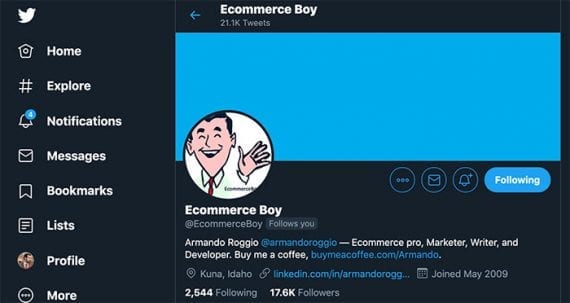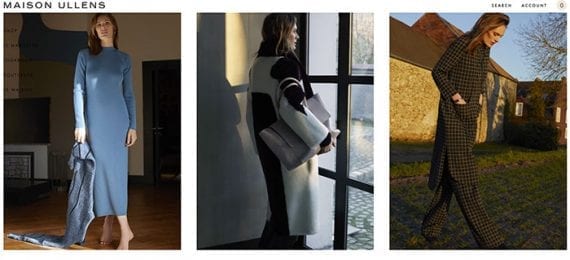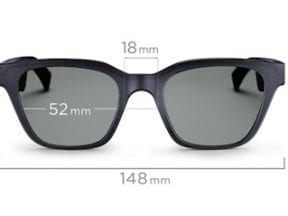Dark mode, accessibility, and simple layouts with plenty of white space may be among the most popular ecommerce design trends for 2020.
Most of the more than 20 ecommerce professionals contacted for this article believed that 2020 held few significant design-specific trends. In this sense, it was “more of the same” in terms of layouts, large fonts, and ecommerce sites based on templates or CSS frameworks.
However, a few tendencies or trends did stand out. In many cases, these trends — such as dark mode, accessibility, and content-centric designs — are the result of an enabling technology or another outside influence rather than user-experience needs.
Dark Mode
Dark mode switches the background of a mobile operating system to black, reducing eye strain in some environments, enabling mobile devices to better adjust to ambient lighting conditions, and (since black pixels on a mobile phone are turned off) extending battery life.
Earlier this year, Apple introduced “dark mode” in iOS 13. Google added its dark mode in Android 10.
In response, for most of the year mobile app developers, designers at social media sites, and just about everyone in the design community have churned out “dark mode” versions of their apps and websites.

Twitter can be displayed in dark mode. Expect ecommerce sites to begin offering dark mode in 2020.
Maksim Rudakouski, the lead user-interface designer at European software firm Smartym Pro, believes dark mode will become “ubiquitous” in 2020, extending to ecommerce website design and ecommerce app interfaces.
If Rudakouski is correct, you could see “dark mode” toggles at the top of popular retail sites and ecommerce apps that inherit dark mode settings from the operating system.
Accessibility
“The Americans with Disabilities Act was passed in 1990, the same year the World Wide Web was invented. Back then, only 15 percent of households owned a computer, and the requirement of removing barriers was intended to facilitate access to physical places of public accommodations,” explained Erica Mazzucato, product marketing manager for Corra, a digital marketing and ecommerce agency.
“Now that websites offer products and services… businesses are increasingly getting hit by lawsuits alleging that their content is not accessible,” Mazzucato continued.
“To avoid implementing features that are difficult to use or incompatible with devices required by users with disabilities, designers will need to ensure that sites are following Web Content Accessibility Guidelines. Even if these guidelines introduce some restrictions, such as using proper contrast and captioning videos, the majority of criteria won’t impact user experience nor restrict creativity. With WCAG, designers will be able to incorporate new visual trends and guarantee inclusiveness as the digital and ecommerce landscape evolves.”
Effectively, designing for accessibility will be important for two reasons. First, it will help ecommerce companies better serve shoppers with disabilities. Second, designing for accessibility could help businesses avoid lawsuits.
Minimalism
Some ecommerce sites may seek to simplify or minimize site navigation and layout, emphasizing a product’s function and features instead of using lots of filters and widgets, which Smartym Pro’s Rudakouski called “intrusive design.”
Jimmy Duvall, chief product officer at BigCommerce, agreed. “I think one of the big trends in ecommerce is, frankly, a simplification.”

Fashion retailer Mosaert uses plenty of white space, large fonts, and simple navigation on its ecommerce site.
“The complexity that exists in the vast majority of [big retail sites] is making it hard for” consumers, Duvall continued.
In 2020, at least some sites may update their designs to “meet consumers where they are” not just in the sense of across devices or experiences, but also within a given shopping experience.
“You see this with some of the more forward-thinking segments of the industry like anybody that selling CBD [cannabidiol, from cannabis],” Duvall said. “You’ll just see how simple and crisp these sites are.”
“It is really narrowing down what is the 70 bazillion widgets on a site to try to figure out 26 different categories of things and just talk to the consumer.”
In practice, minimal design and simplification could generate more white space, relatively larger fonts, and simple navigation.
Content-centric Design
Simplifying ecommerce site design could also drive some businesses to focus relatively more attention on content and delivering more of it.
This content-centric design is at its core about providing the information that shoppers need to discover new products or make purchases.
“It’s a content world that we live in,” Duvall said, “and I think in many ways…ecommerce went away a little bit from content-centric commerce.”
Headless product-information management systems could make it relatively easier to bring product data and content to other applications or to rich features.
Imagine for example a lookbook that includes shoppable photography. When a shopper clicks on the image of a dress, the link doesn’t just connect that shopper with a product detail page, but rather provides the pertinent product information in context.
For example, apparel retailer Maison Ullens’ lookbook features compelling photography and links to product detail pages. In 2020, it could allow shoppers to buy on that resource without leaving.

Maison Ullens’ lookbook features attractive photography and links to product detail pages. In 2020, it could allow shoppers to buy in place without leaving.
Or you might see products mentioned in a blog post. When a shopper hovers over the product name, a mini-cart could open in place, allowing the reader to make a purchase or add the item to her cart.
These sorts of experiences are becoming possible as ecommerce platforms decouple product information from site design, effectively offering a headless product information manager. This is what BigCommerce, as an example, has been promoting.




